After The X Files, Gillian Anderson said she wouldn’t do TV again. How did a BBC period drama change her mind? Interview by Tony Barrell
THE SUNDAY TIMES, 2005
Gillian Anderson’s fan mail recently took on a pleading tone. Dear Gillian, implored the letters and cards from all over the world, when can we see you again on screen or on stage? Where have you been?
The BBC, which wanted the 37-year-old actress badly for a plum role in a blockbuster serial, wasn’t even sure where she was. There were 85 parts to cast, pronto, and if Anderson was on another continent, ensconced within an overprotective cordon of publicists and minders, it might take too long to reach her. “We didn’t believe for one second we’d be able to get through to her,” says Nigel Stafford-Clark, the serial’s producer. “I thought she lived in Los Angeles. And it was our casting director, Kate Rhodes James, who said, “No, she lives over here, in Britain.’”
If she accepted the role, it could be her finest part since she became a pan-terrestrial superstar as Agent Dana Scully in The X Files. In common with that generation-defining TV show, this new BBC serial bristles with mystery, conspiracy and suspense. It even includes an instance of spontaneous human combustion, just the sort of spine-chilling case that Scully and her FBI partner Fox Mulder would have fallen over themselves to investigate. It’s the radical new adaptation of a 67-chapter epic by one of the greatest novelists of all time: Bleak House, by Charles Dickens. The role on the table was the book’s most compelling female protagonist, Lady Dedlock. How could the actress refuse?
My first response was, ‘Look, we’ve had this conversation. I’m not interested in doing television’
The trouble was the T-word. Anderson, who has a reputation for being extremely selective, had been turning down all television work. “I don’t want to be pigeonholed as being somebody who does television, quite frankly,” she explains now, in a slightly surprising English accent, as she sucks on a self-rolled Golden Virginia cigarette in a west London hotel. Had The X Files put her off TV work? “I think so. But also I’m a big film buff and I love the medium of film, and there’s a lot that I would still like to do in film, and people I’d like to work with.” She remembers a feisty exchange with her agent over the Bleak House offer: “My first response was, ‘Look, we’ve had this conversation. I’m not interested in doing television.’ And then my agent kept saying, ‘But hang on, this is the BBC, which is very different from daily television in the States. This is a respectable project, and is actually really good.’”
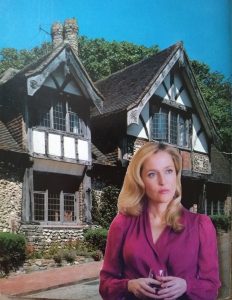
This might have been a rare example of agent understatement: the script is by the king of period adapters, Andrew Davies; the drama uses exquisite English locations and a unique cast of actors, from Charles Dance to Johnny Vegas; and the format is a refreshing departure from the Sunday-evening bustle-and-carriage slot – the drama will go out twice a week, as 16 pacy half-hour episodes. “So I took a look at it,” says Anderson, “and I was in the middle of the first episode and I was thinking, ‘Oh, this is really good.’” Still not 100% convinced, little fusspot that she is, she asked some “fellow actors around town” for their opinions of the project. “And the response was so positive that I felt like it was a kind of community decision,” she laughs.
I miss Lady Dedlock. I can honestly say it’s as if she’s a friend that’s moved away to another country
Shooting started in February 2005 and wrapped in the summer, and Anderson couldn’t be more pleased with her decision to revoke her TV ban. “It was just an extraordinary experience. And I got incredibly attached to the character. Sometimes one just falls in love with being another person and who that person is, and the complexities of her life. And I miss Lady Dedlock – I can honestly say it’s as if she’s a friend that’s moved away to another country.”
Nigel Stafford-Clark talks about the actress as if she were the brightest ray of sunshine on the Bleak House set. “We don’t want her to go, really,” he admitted on her last day on the project. “She’s been such a wonderful presence. She is a remarkable woman, Gillian – quite apart from the fact that she is the perfect Lady Dedlock.”
Without spoiling the plot for those who don’t know Bleak House, Honoria Dedlock is a highly respectable married woman – “at the top of the fashionable tree”, writes Dickens – whose sedate life is overturned by a terrible discovery at the end of the first episode. “Suddenly this explosion takes place inside her, when she realises the past is not the past,” says Stafford-Clark, who adds that Anderson had the perfect pair of assets for the role – her eyes. “Because Lady Dedlock has to remain completely in control on the surface, Gillian had to act with her eyes: they’re the only windows through which you can see what’s going on inside her. And Gillian’s eyes are extraordinary: they can change texture – they can be soft and hard, and pretty much everything in between. They can glitter.”
Her accent changes between American and English according to the nationality of the person she is talking to
They also change colour – “They’re mostly blue but it depends on what I wear,” explains Anderson – and when she fixes you with that forensic Scully gaze during an interview, it can feel magical. There is one other chameleonic aspect to her. She admits that her accent changes according to the nationality of the person she is talking to. “It kind of bugs me, actually. I can’t help it. If I got a phone call right now from someone in the States,” she says in her English voice, “I’d automatically go into speaking the American way. I have noticed that if I’m sitting with an Australian, I’ll start to go into an Aus-trayyyy-lee-en accent. If I was doing a television interview in England that aired in the States and they heard me speaking like this, I can just imagine the reaction: “What the f*** is she doin’?’ ”
It is a relief to find Anderson so warm and effusive. Other interviewers have found her frosty and stubbornly reticent, particularly in the 1990s, when she had to face legions of journalists wanting to talk about UFOs and to probe her mythical sexual relationship with David Duchovny. For one promotional encounter, Anderson kept her arms defiantly folded throughout the discussion and left irritating pauses in her responses; the writer actually stated that Anderson should never do interviews.
Anderson has admitted that she tends to ramble and is rubbish at soundbites; but she has also complained that she is a “goofy” person and that precious few writers have captured this side of her. People could take “goofy” the wrong way, I remark, remembering that British people often associate the word with protruding teeth – but it seems she isn’t quite fully transatlantic enough to understand. “How can they take that the wrong way?” she says, perplexed. “No, tell me!” She says she “can be very childish and very silly”, but fails to give me any examples. What was the last really silly thing she did? “I think it was on set… I can’t remember…” I do, finally, manage to elicit a treasurable Gillian Anderson impression of Goofy, the Disney character. She is dying, she says, to do comedy.
I remember being in our back yard in Crouch End as a child, picking blackberries and collecting spiders
Her unstable accent is partly the result of her itinerant upbringing. Born in Chicago on August 9, 1968, she came to London as a baby with her parents – living initially in Clapton Common and then settling in Crouch End – and then returned to the US at the age of 11, to live in the town of Grand Rapids, Michigan. “I always felt I wasn’t completely American and I wasn’t completely British: there was a feeling of having my feet in both places. And even though I didn’t have a particularly magical childhood, it was a European childhood, so there was this kind of garden feeling to it, you know.” A garden feeling? “Yes, I remember being in our back yard in Crouch End as a child, picking blackberries and collecting spiders and stuff like that.”
Years ago, she says, before she was famous, she revisited her old Crouch End house, at 19 Rosebery Gardens, and couldn’t resist knocking. (The locals here must be used to unexpected Americans – legend has it that a Crouch End housewife once opened the door to Bob Dylan.) A woman came to the door and Anderson asked if she could come in and look around, having grown up here. “She let me in and two things happened. One was that she was very disturbed by my presence: it was not a good experience for her to have this stranger in the house. Secondly, it was so different than it was when I was growing up; it was quite disturbing. It smashed all my childhood ideals of what it was like.”
I go through stages with therapy. There are periods when I don’t feel like I need it, and then something will happen
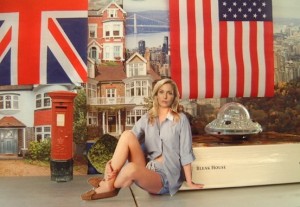
As a young girl in Michigan, Anderson famously rebelled, becoming a regular visitor to the school principal’s office and adopting an outrageous hairstyle – though she says the “three-foot purple Mohawk” mentioned in a cash-in 1990s biography is a gross exaggeration of the DIY effect she created with a razor blade. She has “stuff from my childhood” she is still dealing with, she says, but the details of that appear to be a private matter between her and her therapist. She has been on the couch since she was 14, she admits.
“At different periods of my life, I go through stages where there’s a lot of noise up here,” she says, pointing to her head, which is currently adorned with long blonde hair, a contrast to Scully’s dyed red. “It can be worry or fear or nothing specific, and sometimes it’s incessant and sometimes I’m free of it.” She is apt to drift into therapy-speak – talking about clearing “blocks” to help her become “more fully present” – and this is when she is at her most American. “I go through stages with therapy,” she says. “There are periods of time where I don’t particularly feel like I need it, and then something will happen, or a dynamic will happen, in whatever relationship – work, personal – and I feel like I need to address something to clear it out of the way. And if that is still going on when I’m 60, then it is. If it makes me a happier person, then great.”
It’s clear that she is in one of her happiest phases now. Not only has she completed possibly her second-greatest acting role, but in January she married for the second time. She is now officially, though not professionally, Gillian Ozanne. When she talks about her husband, Julian, she almost glows. He puts “businessman” as his occupation on forms, she says, but it scarcely does him justice. “He’s got so much energy: he puts 110% into everything he does. He’s like a… What’s the right word? Not ‘maverick’… No, he’s a bit of a pioneer.” He has been a journalist and a film producer, and as we speak he is hard at work in Uganda. “The project he is doing now is to do with forestry in Africa and carbon-trading, and he’s educated himself about this whole world that he had no clue about before.
“We met at a friend’s house, when I was actually in another relationship. We were sat next to each other at dinner, and I thought he was absolutely mad and slightly intolerable. And, because I wasn’t eating meat or dairy or drinking or smoking at that stage, he thought I was just this vapid Hollywood actress . And then we saw each other around over the next two or three years, and then eventually, somehow, came together.”
I don’t necessarily like driving in London. I keep forgetting to read what’s painted on the ground. I’ll probably have my licence taken away now I’ve said that!
She once said she was a hard person to be married to. “I definitely am. I’m very independent and I’m very strong-willed. But we find ways constantly to negotiate and reinvent and compromise and trust.” The euphonious pairing of Gillian and Julian live in a house in Notting Hill – “We’re here about half the time, and we do a lot of travelling” – and they have just been joined by her daughter, Piper, from her past relationship with Clyde Klotz, a set designer on The X Files. So Gillian emigrated from Britain to America at 11, and now her daughter is making the opposite trip at the same age. “Exactly! Isn’t that odd? I find that so peculiar. And also, I was an only child until I was almost 13, and my husband and I are talking about having children, so she’ll be having siblings around the same time that I had siblings.”
She is driving Ozanne’s BMW today, and the parking meter outside needs more cash, so she marches out, a trim 5ft 3in figure in a pastel T-shirt and off-white trousers, little toes peeking out of clompy sandals, a £2 coin in her hand. “They don’t give you change, these f***ing things!” she says on her return, sounding more amused than annoyed. “And I realise I’ve been feedin’ it and feedin’ it…”
She likes driving, speaking fondly of the beauty of the “PCH”, the Pacific Coast Highway, but “I don’t necessarily like driving in London.” There are so many things marked on British roads, she says, compared with American roads: “I keep forgetting to read what’s painted on the ground. I’ll probably have my licence taken away now I’ve said that! And roundabouts still are tricky for me, because they don’t exist in the States. I used to come at them full speed ahead – just go into them without looking.”
Her ripe English vowels are, of course, perfect for Lady Dedlock – which is actually her second period role. She played Lily Bart, a doomed New York socialite, in The House of Mirth, Terence Davies’s 2000 film of the Edith Wharton novel. So how does Bart compare with Dedlock? “If you do more than one period piece in your life, you try and make them different. I kept trying to remember who Lily Bart was and what my physicalities were for her, and made sure that I didn’t fall into those facial mannerisms. There were times where, in the process of preparing, through finding Lady Dedlock again for a scene I would pass Lily Bart on the way,” she laughs. “Even just the way she held her mouth and how she used her eyes. And it was quite important for me not to linger there, you know.”
Though she says Bleak House was a “blessed” production, she also experienced “probably the worst filming day of my life”. This is really saying something, when you consider that she endured 15-hour shooting days on The X Files, racing around in all weathers in Vancouver and reacting to all manner of grisly occurrences. “Well, it’s one thing being in awful weather and sleet and having to walk and talk and climb in and out of holes and be covered in goo, and it’s another thing to have to maintain a particular emotional level for so many hours of a day,” she explains. Her emotional maintenance was sorely tested on a gloriously sunny day in Surrey, when she tried to film a highly charged six-page scene with her co-star Anna Maxwell Martin, who plays the character of Esther Summerson. “It was a lovely day, with flowers blooming, but it just happened to be very close to an airfield,” says Anderson. “We spent a whole day battling, having to stop and start because of planes and clouds and bumblebees, and it was emotionally exhausting: you become so hyper-aware of all the sounds that might mean you have to stop. I think we were both crying by the end of the day.”
Lady Dedlock isn’t exactly a fun part: life suddenly starts throwing so many hurdles and terrors in this star-crossed aristo’s path that you wonder if Bleak House is the template for A Series of Unfortunate Events. Anderson sounds as if she found the role a stretch. “One of the challenges of doing this character,” she says, “is that so many awful things happen, one after the other, and you have to find new ways of reacting to every godawful thing that happens to her – not keep crying the same way, not keep looking shocked in the same way…”
The times I’ve had panic attacks on stage have been so utterly terrifying
There is an alluring intensity to Anderson, a quality that makes her a potent conveyor of emotion as an actress but can backfire on her. She loves the stage, she says, but is “terrified of it at the same time. I find doing plays so nerve-racking. Once I get into a play I’m fine, but the initial opening is just…” Her big eyes darken, her look of horror wordlessly completing the sentence. She has experienced panic attacks on stage, and came close to disaster last year at London’s Royal Court while performing The Sweetest Swing in Baseball, in which she plays a woman in a psychiatric institution. “The first preview went, like, wow, and then in the second preview I had a panic attack in the middle of the performance. And the previous times I’ve had panic attacks on stage have been so utterly terrifying – it’s a perpetual thing; it kind of feeds itself – so I was terrified that that was the beginning of the end.” She got through it with “a lot of breathing and talking to the director” and the alternative medicine known as Rescue Remedy.
She has a recurring dream, she confides, in which she is a sloppy and unprofessional actress. “I’ve had it three times and I had it again recently, before my last stint on Bleak House. There’s a particular stage – it’s been the same stage, the same theatre, and it doesn’t resemble any theatre I’ve been to – where I show up to play the lead and I am not prepared at all, in any way, shape or form.” Here her voice becomes velvety, intimate, and slows down; I feel I myself am in a dream.
There are parallels, aren’t there, between Anderson and another actress? I’m thinking of a woman who was paired platonically with a male actor for a popular science-fiction television series, and later refused for a while to appear on TV; a woman who also has a profound passion for the theatre – Dame Diana Rigg, the 1960s action heroine of The Avengers. Rigg also played Lady Dedlock in the 1985 TV adaptation of Bleak House. “Somebody just told me that the other day; I hadn’t realised that. Strangely, Diana ended up being at our wedding party at our house – it was the first time that I’d met her, but my husband knows her. And she ended up reading a poem – just stood up on a chair in the middle of the speeches and read this lovely poem for us. You’re right, yeah, she did do a sci-fi series. That’s so interesting. I need to have that conversation with her at some point.”
On the subject of parallels and coincidences, did Anderson realise that she and the Bleak House team had, completely unwittingly, begun shooting the drama on a very significant day? The shoot was slated for February 7, and nobody – not even Stafford-Clark – had realised it was Charles Dickens’s birthday. “My God, is that true? That’s really eerie,” says Anderson, breathily. “I just got goose bumps!”
At some point, she wants to add another string to her bow. Passionate about modern art, she fancies having a go herself
Bleak House is one of a raft of disparate outlets for Anderson at the moment . We can already see her in The Mighty Celt, a greyhound-racing movie set in Northern Ireland, and she will also be appearing in The Last King of Scotland, a film about Idi Amin. Other productions are in embryo, including one about Martha Gellhorn, the war reporter and wife of Ernest Hemingway, with Anderson playing the title role.
At some point in the future, the actress reveals, she also wants to add another string to her bow. She is passionate about modern art, especially the sculpture of Anish Kapoor, the paintings of Gerhard Richter and the video art of Bill Viola, and fancies having a go herself. “I do actually think that eventually I will end up doing some form of art. I’ve had a lot of ideas that I haven’t made time to explore. But right now my focus needs to be on this part of my creativity, the acting part. You see, if I gave myself the time, I’m afraid that I’d let go of the rope that connects me to the acting side.” If that happened, she could surely expect more questioning fan mail. ♦
© 2014 Tony Barrell
Tony Barrell has been published by HarperCollins, Omnibus Press, ACC Art Books, Iconic Images and Godknowswhoelse.
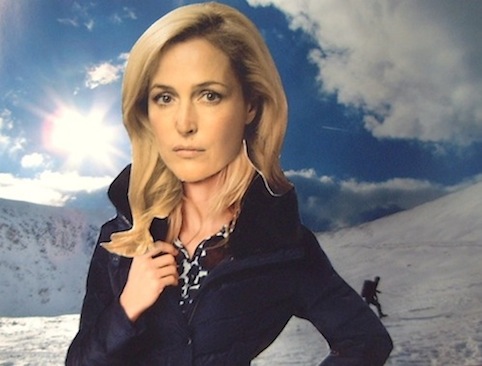
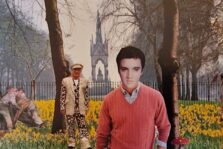
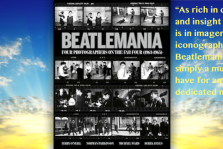
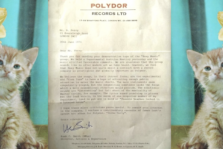

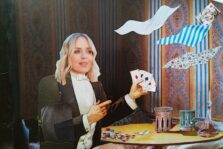
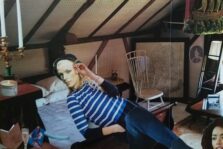

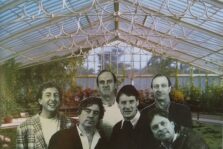
0 comments found
Comments for: THE ANDERSON TAPES